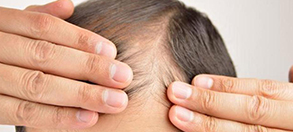Dr Azadeh Goodarzi, you recently published Comparison of Systemic Mycophenolate Mofetil with Topical Clobetasol in Lichen Planopilaris: A Parallel-Group, Assessor- and Analyst-Blinded, Randomized Controlled Trial. Can you tell us in a simple manner, and 1-2 sentences, what the take away would be for an average person with
hair thinning?
Firstly, I would recommend patients with hair thinning to visit a dermatologist and take medication based on scientific clinical diagnosis and be followed up, secondly know that most hair disorders need long-term treatment and patience.
How often do you do scalp biopsies on male pattern baldness patients?
In typical cases of male pattern hair loss (androgenic alopecia), usually a biopsy is not required. But if there is any uncertainty regarding the etiology of hair loss especially where a cicatricial (scarring) alopecia is suspected, biopsy can prove helpful.
How often do you do scalp biopsies on females with hair loss?
When there is any probability of scarring alopecia or a diagnosis of non-scarring alopecia cannot be confirmed solely based on clinical examination, our trend is to perform a biopsy.
What general advice do you give to the typical male or female with androgenetic alopecia?
Certain medications with acceptable efficacy are available for prevention and/or treatment of hair loss. The choice of appropriate medication is best made by the physician, considering an individual needs and preferences.
What general advice do you give to the typical male or female with lichen planopilaris?
Firstly, the patients need to be informed of the scarring nature of their disease and the aim of treatment which is primarily avoidance of further hair loss. Therefore, expectations from treatment must be realistic. After planning the appropriate treatment, patients require close follow-up supervision of a dermatologist, to monitor their response to treatment, as well as possible adverse effects of medications. Finally, since the exact etiology of LPP is yet to be determined, patients are advised to avoid any likely stimulant, like hair dyes.
Do you ask all your hair thinning patients to try minoxidil, even if it’s not androgenetic?
In case of Alopecia Areata and also in lichen planopilaris with androgenic distribution pattern, I recommend the use of minoxidil, but not as a routine therapy for any non-androgenic alopecia.
Do you ask all your hair thinning patients to try finasteride, even if it’s not androgenetic? In the absence of androgenic alopecia, there remain few indications where finasteride may offer some benefit. These conditions include Frontal Fibrosing Alopecia (FFA) and rarely lichen planopilaris with androgenic distribution pattern.
Read more hair expert interviews.


